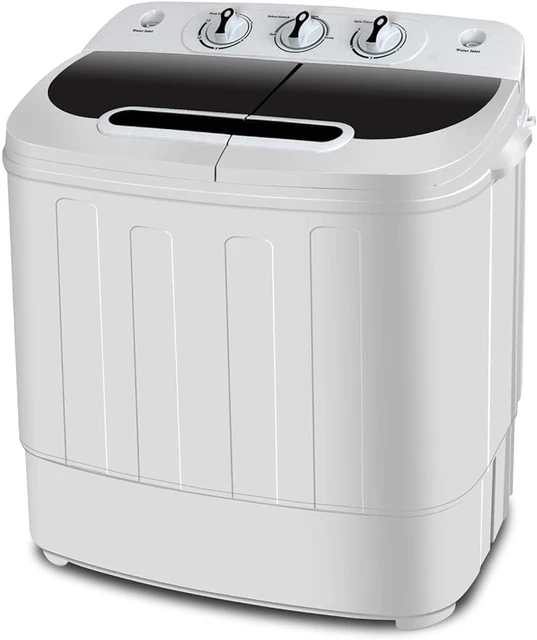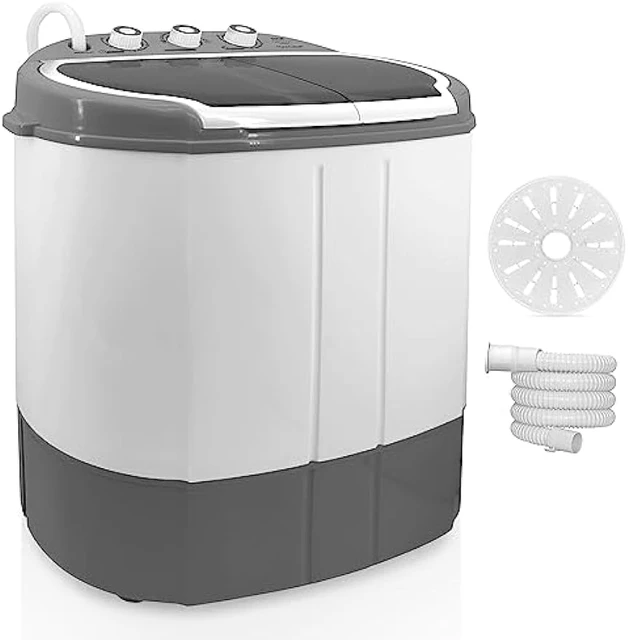Introduction
Discovering that your washing machine is not spinning can be frustrating and inconvenient, as it prevents you from efficiently completing your laundry. There are several potential causes for this issue, ranging from simple and easily fixable problems to more complex mechanical or electrical malfunctions. In this guide, we will explore the common causes of a washing machine not spinning and provide practical troubleshooting steps for each cause. By understanding these causes and employing the appropriate solutions, you can identify and resolve the issue, restoring your washing machine to its full functionality.

What causes a washing machine not to spin?
Power and Control Issues
1.1. Power Supply Problems
Check if the washing machine is properly connected to a functioning power outlet. Ensure that the circuit breaker or fuse controlling the machine’s power supply is not tripped or blown. If the power supply has been interrupted, reset the breaker or replace the fuse.
1.2. Control Panel Malfunction
Inspect the control panel for any error codes or malfunction indicators. Error codes can provide valuable information about the specific issue. Consult the user manual for your washing machine to decipher the error code and follow the manufacturer’s instructions for troubleshooting or resetting the machine.
Lid or Door Interlock Issues
2.1. Lid or Door Not Closed Properly
Ensure that the lid or door of the washing machine is firmly closed. Many washing machines have a safety mechanism that prevents spinning when the lid or door is open. Close the lid or door tightly and check if the machine starts spinning.
2.2. Faulty Lid or Door Interlock Switch
The lid or door interlock switch is a safety feature that prevents the machine from spinning when the lid or door is open. If the switch is defective, it may not properly engage when the lid or door is closed, causing the machine not to spin. Contact a qualified technician to inspect and replace the faulty switch if needed.
Motor and Belt Issues
3.1. Motor Failure
The motor is responsible for driving the spinning motion of the washing machine drum. If the motor is faulty or has completely failed, the machine will not spin. Listen for any unusual noises coming from the machine’s motor or feel for vibrations. If the motor does not appear to be functioning, it may need to be replaced by a professional technician.
3.2. Broken or Loose Belt
A broken or loose belt can prevent the drum from spinning. Inspect the belt located near the bottom of the machine to determine if it is intact and properly aligned. Consult the manufacturer’s instructions or seek assistance from a professional technician.
Blocked or Damaged Drain Pump
4.1. Clogged Drain Pump Filter
A clogged filter in the drain pump can impede water drainage, causing the machine not to spin. Locate the drain pump filter, usually located at the front or bottom of the machine, and check for any debris or blockages. Remove any obstructions and clean the filter thoroughly. Restart the machine to see if it begins spinning.
4.2. Damaged Drain Pump
A damaged or malfunctioning drain pump can result in water not draining properly from the machine, leading to spinning issues. Inspect the drain pump for any signs of damage, such as leaks or unusual noises.
Control Board Malfunction
5.1. Faulty Control Board
The control board, also known as the main control or electronic control board, is responsible for regulating and coordinating the machine’s functions. If the control board is malfunctioning or experiencing a software glitch, it may cause the machine not to spin. Inspect the control board for any signs of damage or burnt components. If the control board appears defective, contact a professional technician to diagnose and repair it.
Suspension or Shock Absorber Problems
6.1. Worn or Damaged Suspension Springs
Suspension springs help stabilize the drum during the spinning process. Inspect the suspension springs for any signs of wear or damage. If necessary, replace the springs to restore proper operation.
6.2. Faulty Shock Absorbers
Shock absorbers play a vital role in dampening the vibrations and movements of the drum during spinning. If the shock absorbers are faulty or worn out, they may not effectively stabilize the drum, resulting in the machine not spinning.
Overloading or Uneven Load
7.1. Overloaded Drum
If the drum is overloaded with too many clothes, the excess weight can strain the motor and prevent the machine from spinning. Remove some items from the drum to reduce the load and allow the machine to operate properly.
7.2. Uneven Distribution of Clothes
An unevenly distributed load can cause an imbalance during the spinning process, triggering the machine’s safety mechanism and preventing it from spinning. Open the machine, redistribute the clothes evenly in the drum, and ensure that there are no tangled or bunched-up items.
Drive Coupler Issues
8.1. Worn or Broken Drive Coupler
The drive coupler connects the motor to the transmission or agitator. If the drive coupler is worn or broken, it can prevent the drum from spinning. Inspect the drive coupler for any signs of wear or damage. If necessary, replace the drive coupler following the manufacturer’s instructions or seek assistance from a professional technician.
Professional Assistance and Maintenance
9.1. Seek Professional Help
If you have gone through the troubleshooting steps and the washing machine still does not spin, it may require professional assistance. Contact the manufacturer’s customer service or a qualified technician to diagnose and resolve the issue.
9.2. Regular Maintenance and Cleaning
To prevent future issues, perform regular maintenance on your washing machine. Clean the drum, detergent drawer, and filters periodically to remove any buildup or debris. Follow the manufacturer’s instructions for maintenance procedures and schedules.
Conclusion
A washing machine not spinning can be caused by various factors, ranging from power supply issues to mechanical malfunctions. By identifying the potential causes and employing the appropriate solutions, you can troubleshoot and resolve the issue. Additionally, avoid overloading the drum and distribute clothes evenly for balanced spinning. Regular maintenance and cleaning, as well as seeking professional assistance when needed, will help keep your washing machine in optimal working condition. By addressing the specific cause of the problem, you can restore the spinning functionality of your washing machine and ensure efficient laundry cycles.

